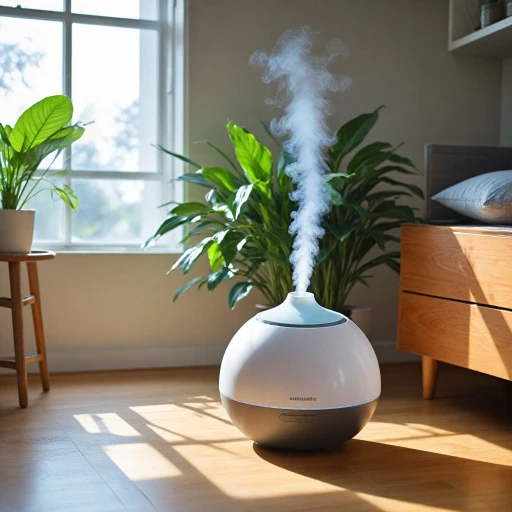What is a Dynamic Air Filter?
Introduction to Dynamic Air Filters
Dynamic air filters are a cutting-edge solution designed to tackle air purification more effectively than traditional filter systems. These filters utilize a combination of technologies to enhance their efficiency in trapping airborne particles while improving overall air quality.
In essence, the dynamic air filter system relies on polarized media technology, making it adaptable to various environments and applications. Instead of merely blocking particles, these systems actively attract and hold particles, including dust, pollen, and other micron particles, on a disposable media pad. This innovative approach allows for higher efficiency air cleaning, often surpassing standard MERV filters without compromising airflow.
Dynamic polarized filters are not just mechanical barriers. Their advanced design integrates electronic air purification elements that activate carbon layers for better odor and gas removal. This ensures the capture of a broad spectrum of contaminants, making them ideal for both household and commercial use. With such technology, you walk towards free air from allergens, pollutants, and irritants.
Moreover, compared to traditional filters that might require frequent replacements, dynamic air filters are engineered to reduce the hassle and costs associated with maintenance. They often come with features like free shipping and brand-specific replacement pads, simplifying the overall maintenance process.
For further understanding of how this polarization works in a dynamic air filter, you might find it useful to learn more about the
role of fiberglass air filters, as their principles share some conceptual similarities.
Dynamic air filters represent a significant leap forward in the air purification sector, offering enhanced performance with a robust design catering to modern air quality requirements.
How Dynamic Air Filters Improve Air Quality
Enhancing Indoor Air with Cutting-Edge Solutions
Dynamic air filters are known for their robust ability to enhance indoor air quality significantly. Unlike traditional air cleaners, these systems take advantage of polarized media technology to trap even the tiniest particles. This advanced mechanism operates using a charged media pad, effectively capturing micron particles that often slip through standard merv filters.
Dynamic filters deploy polarized media to draw and capture free-flowing particles. This unique approach ensures higher efficiency air cleaning, which is critical for maintaining pristine indoor air quality. Free shipping offers on many brands provide an accessible gateway for consumers to experience this top-tier purification.
Part of the prowess of dynamic air systems is their activated carbon inclusion. This feature adds an extra layer of protection by absorbing gaseous pollutants, fostering an environment notably free from harmful contaminants. The activated carbon not only targets particles but also addresses issues tied to odors, rendering indoor spaces more pleasant.
Furthermore, heating cooling systems benefit significantly from integrating dynamic polarized cleaners. The compound efficiency ensures that both the air cleaner system and climate control are operating at optimal levels, reducing the strain on electronic air components and prolonging their lifespan.
Ultimately, these cutting-edge air purification technologies offer a view of cleaner, more breathable environments. For a deeper dive into the intricacies of filter media and how they enhance purification, consider visiting this detailed
exploration on filter media rolls. This resource provides insight into product advancements that ensure your air system functions at peak performance.
Key Features to Look for in a Dynamic Air Filter
Essential Attributes of Dynamic Air Filters
Dynamic air filters are an integral part of air purification systems, known for their ability to significantly enhance indoor air quality. When considering a dynamic air cleaner, it’s vital to understand the features that ensure optimal performance.
- Polarized Media Technology: This technology boosts the efficiency of the filters by using a polarized media pad, which attracts and captures micron particles like dust, pollen, and pet dander. This system makes the dynamic air cleaner a formidable option for those seeking high-efficiency air filtration, by leveraging the physics of polarization for a more effective capture.
- Compatibility with Air Systems: It's essential to view these air filters as part of a larger air cleaning system. Compatibility with your existing heating and cooling system is crucial to ensure smooth integration and performance. Proper fit within the air filter housing can also enhance efficiency, reducing the load on the HVAC systems.
- Activated Carbon Addition: Some dynamic filters incorporate activated carbon, which helps in capturing volatile organic compounds (VOCs) and odors, a feature that traditional filters might lack. This makes them excellent air cleaners for improving the overall indoor air ambiance by reducing unwanted household smells.
- High MERV Ratings: MERV filters are known for their effectiveness in filtering out smaller particles. A high MERV rating signifies a higher air quality improvement potential, capturing even the most elusive particles.
- Easy Product Replacement and Maintenance: Unlike some other air purification technologies that may require complicated upkeep, dynamic air filters typically offer straightforward maintenance. Regular replacement of pads is recommended to maintain optimal air quality, and many brands offer free shipping for filter replacements to make the process hassle-free.
Dynamic air filters combine efficiency with ease of maintenance, providing a compelling choice for homeowners looking to improve indoor air quality. For those interested in learning more about how air filter housing impacts these systems, further insights can be
found here.
Comparing Dynamic Air Filters with Other Air Purification Technologies
Analyzing Dynamic Air Filters Against Competing Technologies
When navigating the world of air filtration systems, dynamic air filters stand out by utilizing dynamic polarized technology. This approach distinguishes them from their counterparts. As we explore how these filters measure against other purification methods, several standout aspects deserve attention.
- MERV Ratings vs. Efficiency: Dynamic air filters often integrate a combination of polarized media and activated carbon filters to capture particles as small as micron particles effectively. Traditionally, high-efficiency MERV filters gain traction due to their ability to trap a high percentage of small particles, ranging from 1 to 5 microns. However, while MERV filters focus solely on physical obstruction, dynamic systems enhance this with charged media that actively attracts particles, potentially heightening their purification capacity.
- Electronic Air Cleaners: Some systems lean on electronic purification processes, which rely on electronic charging to capture particles. While effective, they might increase power consumption. Dynamic filters, combining static and electronic elements but without solely depending on active charging, offer a balanced approach, often leading to reduced energy usage.
- Activated Carbon Integration: Activated carbon pads within dynamic filters provide an added layer for tackling odors and gaseous pollutants. This is particularly beneficial compared to standard mechanical filters that may lack such functionalities. Systems with activated components tend to excel in environments where gaseous contaminants are prevalent.
- Ease of Maintenance: One significant element where dynamic filters shine is the ease of maintenance. While replacement and pad change is necessary, the product's longevity often means these are less frequent than standard filters, leading to overall lower operational costs.
Understanding how dynamic air filters stack up against other technologies gives a clearer view of their advantages within the landscape of indoor air cleaning solutions. For anyone prioritizing energy efficiency and cost-effectiveness in an air cleaner, dynamic systems offer a compelling option to consider.
Maintenance Tips for Dynamic Air Filters
Ensuring Optimal Performance for Your Dynamic Air Filter
Maintaining your dynamic air filter is crucial to ensure it functions effectively and continues to improve your indoor air quality. Here's a guide to help you keep your system in top shape:
- Regular Inspection: Periodically check your filter system to ensure it's free from any obvious signs of wear and tear. This regular view helps in identifying any immediate attention needs.
- Timely Replacement: While dynamic air filters are designed to last longer than traditional filters, it’s essential to replace the polarized media pad as recommended by the brand or manufacturer. Consider factors like your indoor air quality and heating cooling demands.
- Cleaning Pads and Parts: For cleaners dynamic systems, clean or replace pads filter and other components when necessary. Dust and particles can accumulate, affecting the cleaner's efficiency.
- Monitor Efficiency: Keep an eye on the system’s MERV rating. A drop in efficiency air performance might indicate that the activated carbon or electronic air components need checking.
- Professional Check-ups: Schedule regular maintenance with a professional to ensure the product is performing at its best. They can assess more complex elements of the air cleaning system, including dynamic polarized sections.
Following these maintenance tips not only ensures your air purifier system remains effective but also extends the life of your dynamic air filter and parts. Remember, well-maintained filters contribute significantly to maintaining high efficiency in air purification, keeping your indoor environment free from micron particles.
These steps ensure your system operates at its best, offering you and your household a cleaner, healthier air supply.
Common Misconceptions About Dynamic Air Filters
Addressing Misunderstandings About Dynamic Air Filters
Dynamic air filters often come with a few misunderstandings that can affect how they are perceived and utilized. Here, we address some common misconceptions to help you better understand these air purification systems.
- Not Just For Large Particles: Some believe that dynamic air filters are only effective for trapping large particles. However, these systems are equipped to capture micron particles as well. With high-efficiency air cleaning systems, they can handle a wide range of airborne contaminants, improving your indoor air quality significantly.
- Require Regular Maintenance: Another misconception revolves around the maintenance of dynamic filters. Unlike certain passive systems, dynamic air cleaners require regular upkeep to maintain their efficiency. Media pads may need replacement or cleaning, which ensures they continue to work effectively over time.
- More Than Just Carbon Filters: It is a common misunderstanding that dynamic systems only use activated carbon filters. While activated carbon plays a crucial role in absorbing odors and volatile organic compounds, dynamic air filters often employ polarized media technology, enhancing their performance by capturing and retaining particles through electrostatic attraction.
- Cost vs. Value: Some users view dynamic filters as costly compared to traditional options like MERV filters. However, the long-term benefits of improved air quality and reduced need for other air cleaning products can outweigh the initial investment, offering superior value over time.
- Compatibility and Brand Variability: Users sometimes worry about compatibility with heating and cooling systems. However, many dynamic air filters are designed to integrate seamlessly with existing HVAC systems. Furthermore, there are multiple brands available, providing options that include features like free shipping and various filter pads, fitting different needs.
Understanding these aspects can help clarify the realities of dynamic air filters and encourage informed decision-making when choosing an air purification solution for your home or office.

